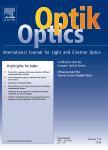版权所有:内蒙古大学图书馆 技术提供:维普资讯• 智图
内蒙古自治区呼和浩特市赛罕区大学西街235号 邮编: 010021

作者机构:Key Lab of Advanced Design and Intelligent Computing (Ministry of Education) Dalian University Dalian 116622 China School of Information and Communication Engineering Dalian University of Technology Dalian 116024 China Laboratory for Imagery Vision and Artificial Intelligence (LIVAI) École de technologie supérieure (ETS) Montreal H3C1K3 Canada International School of Information Science and Engineering (DUT-RUISE) Dalian University of Technology Dalian 116622 China School of Computer Science and Technology Dalian University of Technology Dalian 116024 China
出 版 物:《Optik》
年 卷 期:2019年第180卷
页 面:847-857页
学科分类:070207[理学-光学] 07[理学] 08[工学] 0803[工学-光学工程] 0702[理学-物理学]
主 题:High-order statistics Supervised hashing Bilinear pooling CNN Image retrieval
摘 要:Recently, deep hashing has achieved excellent performance in large-scale image retrieval by simultaneously learning deep features and hash function. However, state-of-the-art methods for this task have so far failed to explore feature statistics higher than first-order. To address this problem, we propose two novel deep high-order supervised hashing (DHoSH) architectures based on point-wise labels (DHoSH-PO) and pair-wise labels (DHoSH-PA), respectively. The core of DHoSH is a trainable layer of bilinear features incorporated into existing deep convolutional neural network (CNN) for end-to-end learning. This layer captures the interaction of local features by bilinear pooling, using correlation to model dependencies of features within the same layer or cross-correlation for features across different layers of the CNN. Furthermore, DHoSH systematically employs the high-order statistics of features of multiple layers. Extensive experiments on commonly used image retrieval benchmarks show that our DHoSH-PO and DHoSH-PA models yield improved accuracy over its first-order counterparts and achieve effective performance for these benchmarks.